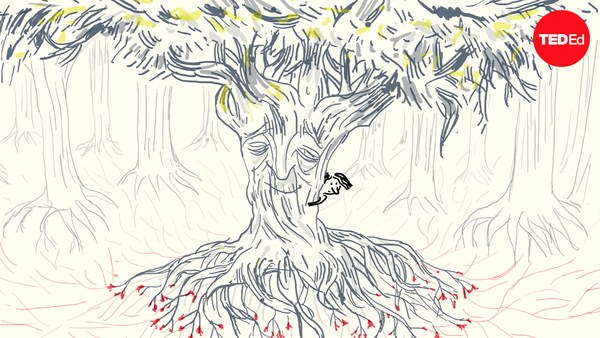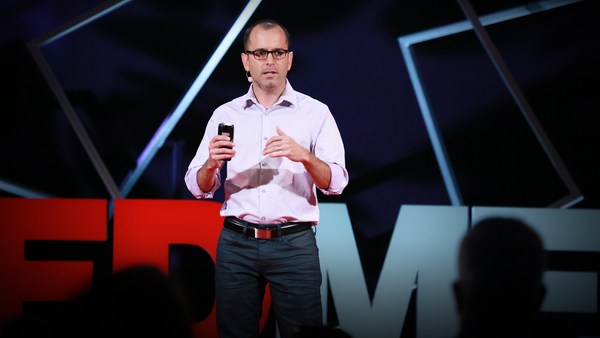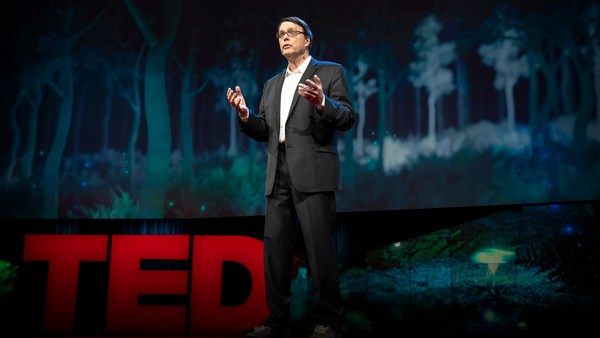100 years ago, there were 2,000 varieties of peaches, nearly 2,000 different varieties of plums and almost 800 named varieties of apples growing in the United States. Today, only a fraction of those remain, and what is left is threatened by industrialization of agriculture, disease and climate change.
Those varieties that are threatened include the Blood Cling, a red-flesh peach brought by Spanish missionaries to the Americas, then cultivated by Native Americans for centuries; an apricot that was brought by Chinese immigrants who came to work on the Transcontinental Railroad; and countless varieties of plums that originated in the Middle East and were then brought by Italian, French and German immigrants. None of these varieties are indigenous. In fact, almost all of our fruit trees were brought here, including apples and peaches and cherries. So more than just food, embedded within these fruit is our culture. It's the people who cared for and cultivated them, who valued them so much that they brought them here with them as a connection to their home, and it's the way that they've passed them on and shared them. In many ways, these fruit are our story. And I was fortunate enough to learn about it through an artwork that I created entitled the "Tree of 40 Fruit."
The Tree of 40 Fruit is a single tree that grows 40 different varieties of stone fruit. So that's peaches, plums, apricots, nectarines and cherries all growing on one tree. It's designed to be a normal-looking tree throughout the majority of the year, until spring, when it blossoms in pink and white and then in summer, bears a multitude of different fruit. I began the project for purely artistic reasons: I wanted to change the reality of the everyday, and to be honest, create this startling moment when people would see this tree blossom in all these different colors and bear all of these different fruit.
I created the Tree of 40 Fruit through the process of grafting. I'll collect cuttings in winter, store them, and then graft them onto the ends of branches in spring. In fact, almost all fruit trees are grafted, because the seed of a fruit tree is a genetic variant of the parent. So when we find a variety that we really like, the way that we propagate it is by taking a cutting off of one tree and putting it onto another -- which is kind of crazy to think that every single Macintosh apple came from one tree that's been grafted over and over from generation to generation. But it also means that fruit trees can't be preserved by seed. I've known about grafting as long as I can remember. My great-grandfather made a living grafting peach orchards in Southeastern Pennsylvania. And although I never met him, any time anyone would mention his name, they were quick to note that he knew how to graft as if he had a magical or mystical capability.
I decided on the number 40 for the Tree of 40 Fruit because it's found throughout Western religion as not the quantifiable dozen and not the infinite but a number that's beyond counting. It's a bounty or a multitude. But the problem was that when I started, I couldn't find 40 different varieties of these fruit, and this is despite the fact that I live in New York state, which, a century ago, was one of the leading producers of these fruit. So as they were tearing out research orchards and old, vintage orchards, I would collect branches off them and graft them onto trees in my nursery.
So this is what the Tree of 40 Fruit look like when they were first planted, and this is what they look like six years later. This is definitely not a sport of immediate gratification --
(Laughter)
It takes a year to know if a graft has succeeded; it takes two to three years to know if it produces fruit; and it takes up to eight years to create just one of the trees.
Each of the varieties grafted to the Tree of 40 Fruit has a slightly different form and a slightly different color. And I realized that by creating a timeline of when all these blossomed in relationship to each other, I can essentially shape or design how the tree appears during spring. And this is how they appear during summer. They produce fruit from June through September. First is cherries, then apricots, Asian plums, nectarines and peaches, and I think I forgot one in there, somewhere ...
(Laughter)
Although it's an artwork that exists outside of the gallery, as the project continues, it's been conservation by way of the art world. As I've been asked to create these in different locations, what I'll do is I'll research varieties that originated or were historically grown in that area, I'll source them locally and graft them to the tree so that it becomes an agricultural history of the area where they're located.
And then the project got picked up online, which was horrifying and humbling. The horrifying part was all of the tattoos that I saw of images of the Tree of 40 Fruit.
(Laughter)
Which I was like, "Why would you do that to your body?"
(Laughter)
And the humbling part was all of the requests that I received from pastors, from rabbis and priests who asked to use the tree as a central part within their service. And then it became a meme -- and the answer to that question is "I hope not?"
[Is your marriage like the Tree of 40 Fruit?]
(Laughter)
Like all good memes, this has led to an interview on NPR's "Weekend Edition," and as a college professor, I thought I peaked -- like, that was the pinnacle of my career -- but you never know who's listening to NPR. And several weeks after the NPR interview, I received an email from the Department of Defense. The Defense Advanced Research Project Administration invited me to come talk about innovation and creativity, and it's a conversation that quickly shifted to a discussion of food security. You see, our national security is dependent upon our food security. Now that we've created these monocultures that only grow a few varieties of each crop, if something happens to just one of those varieties, it can have a dramatic impact upon our food supply. And the key to maintaining our food security is preserving our biodiversity. 100 years ago, this was done by everybody that had a garden or a small stand of trees in their backyard, and grew varieties that were passed down through their family.
These are plums from just one Tree of 40 Fruit in one week in August. Several years into the project, I was told that I have one of the largest collections of these fruit in the Eastern United States, which, as an artist, is absolutely terrifying.
(Laughter)
But in many ways, I didn't know what I had. I discovered that the majority of the varieties I had were heirloom varieties, so those that were grown before 1945, which is seen as the dawn of the industrialization of agriculture. Several of the varieties dated back thousands and thousands of years. And finding out how rare they were, I became obsessed with trying to preserve them, and the vehicle for this became art. I would go into old, vintage orchards before they were torn out and I would save the bowl or the trunk section that possessed the original graft union. I started doing pressings of flowers and the leaves to create herbarium specimens. I started to sequence the DNA. But ultimately, I set out to preserve the story through these copper-plate etchings and letterpress descriptions. To tell the story of the George IV peach, which took root between two buildings in New York City -- someone walks by, tastes it, it becomes a major commercial variety in the 19th century because it tastes just that good. Then all but vanishes, because it doesn't ship well and it doesn't conform to modern agriculture.
But I realize that as a story, it needs to be told. And in the telling of that story, it has to include the experience of being able to touch, to smell and to taste those varieties. So I set out to create an orchard to make these fruit available to the public, and have the aim of placing them in the highest density of people that I could possibly find. Naturally, I started looking for an acre of land in New York City --
(Laughter)
which, in retrospect, seemed, like, rather ambitious, and probably the reason why nobody was returning my phone calls or emails --
(Laughter)
until eventually, four years later, I heard back from Governors Island.
So Governors Island is a former naval base that was given to the City of New York in 2000. And it opened up all of this land just a five-minute ferry ride from New York. And they invited me to create a project that we're calling the "Open Orchard" that will bring back fruit varieties that haven't been grown in New York for over a century. Currently in progress, The Open Orchard will be 50 multigrafted trees that possess 200 heirloom and antique fruit varieties. So these are varieties that originated or were historically grown in the region. Varieties like the Early Strawberry apple, which originated on 13th Street and Third Avenue. Since a fruit tree can't be preserved by seed, The Open Orchard will act like a living gene bank, or an archive of these fruit. Like the Tree of 40 Fruit, it will be experiential; it will also be symbolic. Most importantly, it's going to invite people to participate in conservation and to learn more about their food.
Through the Tree of 40 Fruit, I've received thousands and thousands of emails from people, asking basic questions about "How do you plant a tree?" With less than three percent of the population having any direct tie to agriculture, the Open Orchard is going to invite people to come take part in public programming and to take part in workshops, to learn how to graft, to grow, to prune and to harvest a tree; to take part in fresh eating and blossom tours; to work with local chefs to learn how to use these fruit and to recreate centuries-old dishes that many of these varieties were grown specifically for. Extending beyond the physical site of the orchard, it will be a cookbook that compiles all of those recipes. It will be a field guide that talks about the characteristics and traits of those fruit, their origin and their story.
Growing up on a farm, I thought I understood agriculture, and I didn't want anything to do with it. So I became an artist --
(Laughter)
But I have to admit that it's something within my own DNA. And I don't think that I'm the only one. 100 years ago, we were all much more closely tied to the culture, the cultivation and the story of our food, and we've been separated from that. The Open Orchard creates the opportunity not just to reconnect to this unknown past, but a way for us to consider what the future of our food could be.
Thank you.
(Applause)





